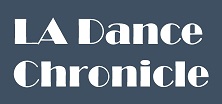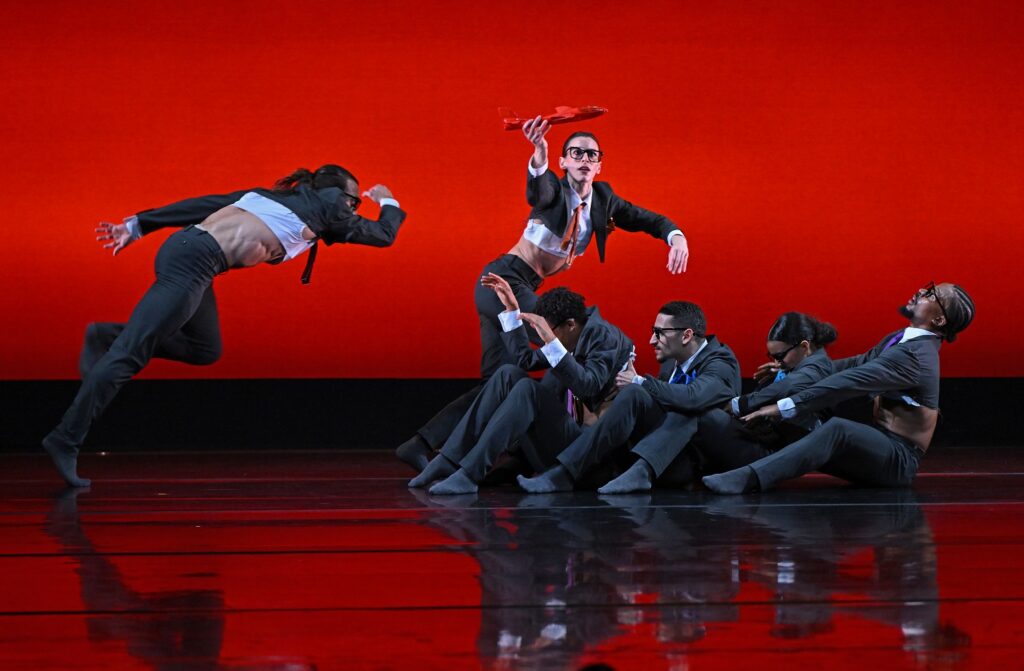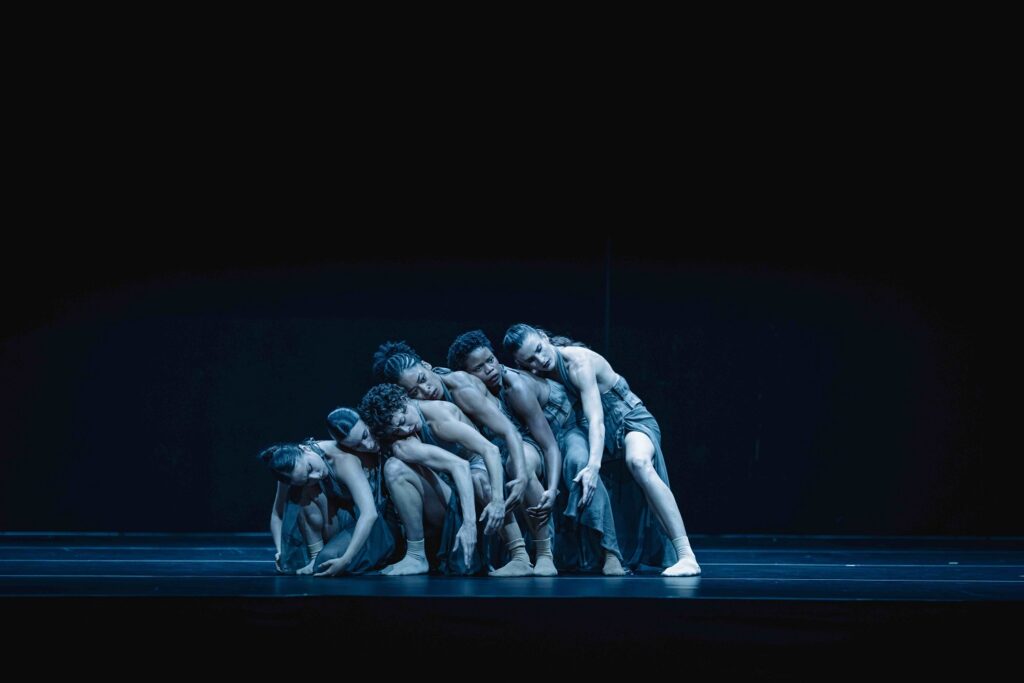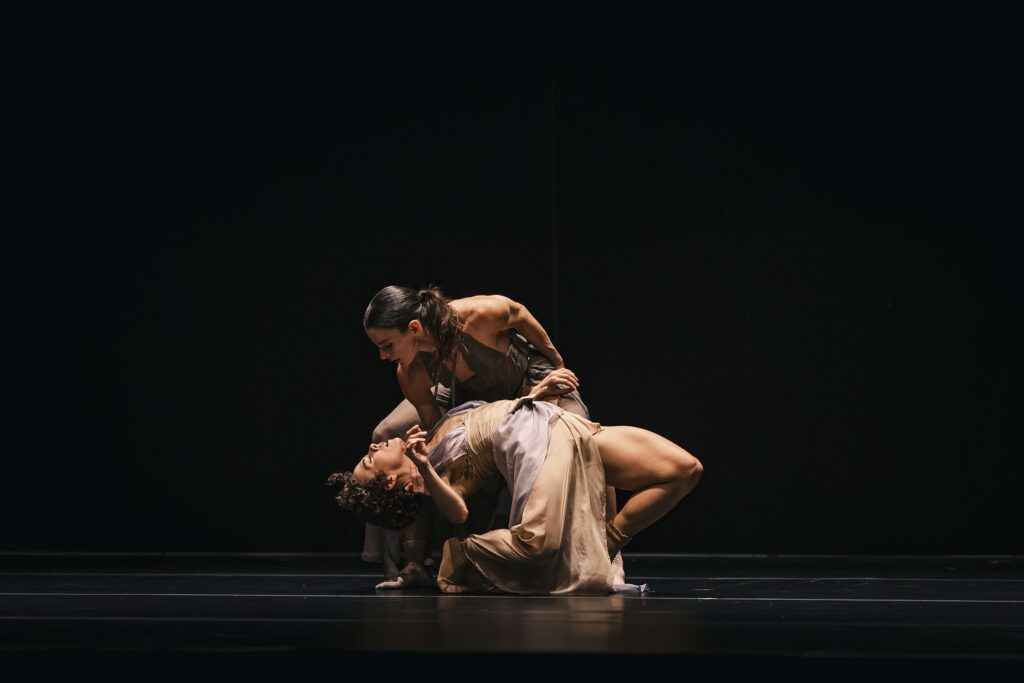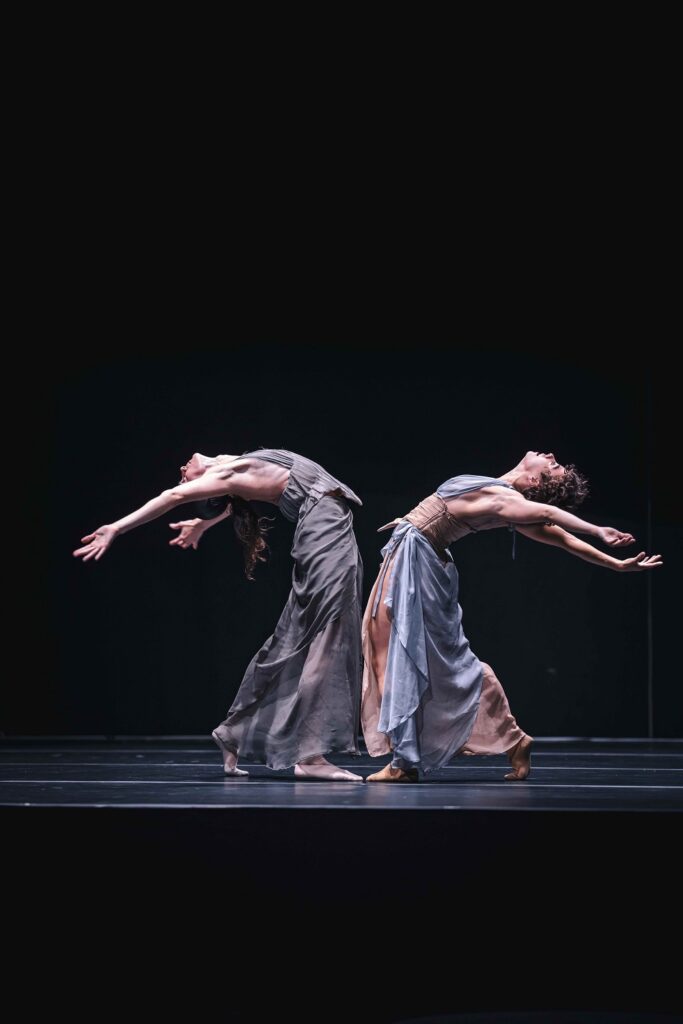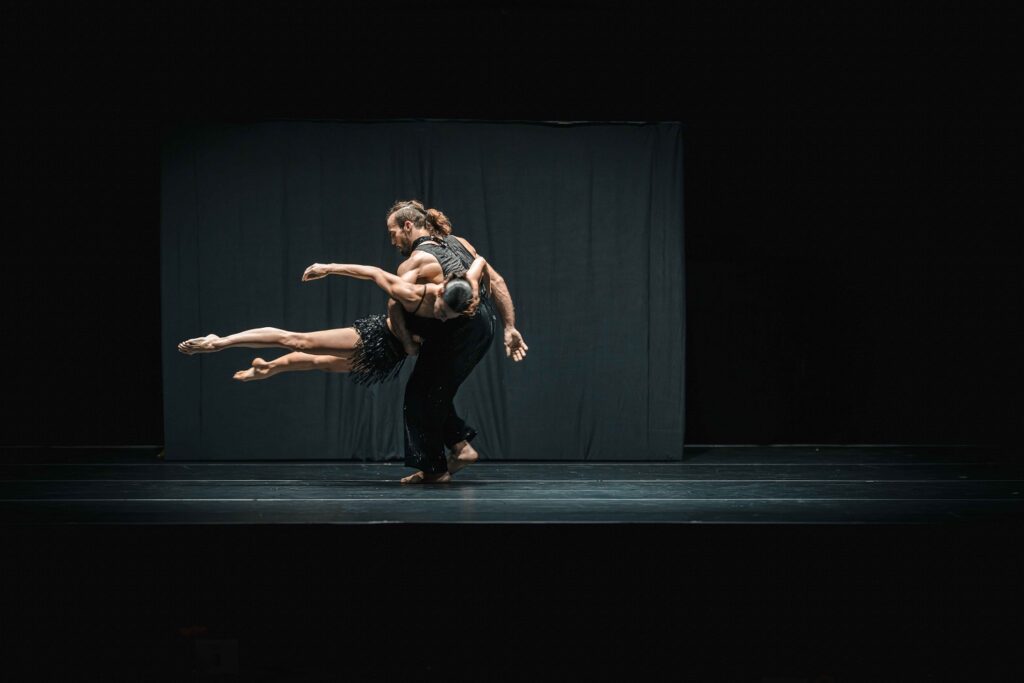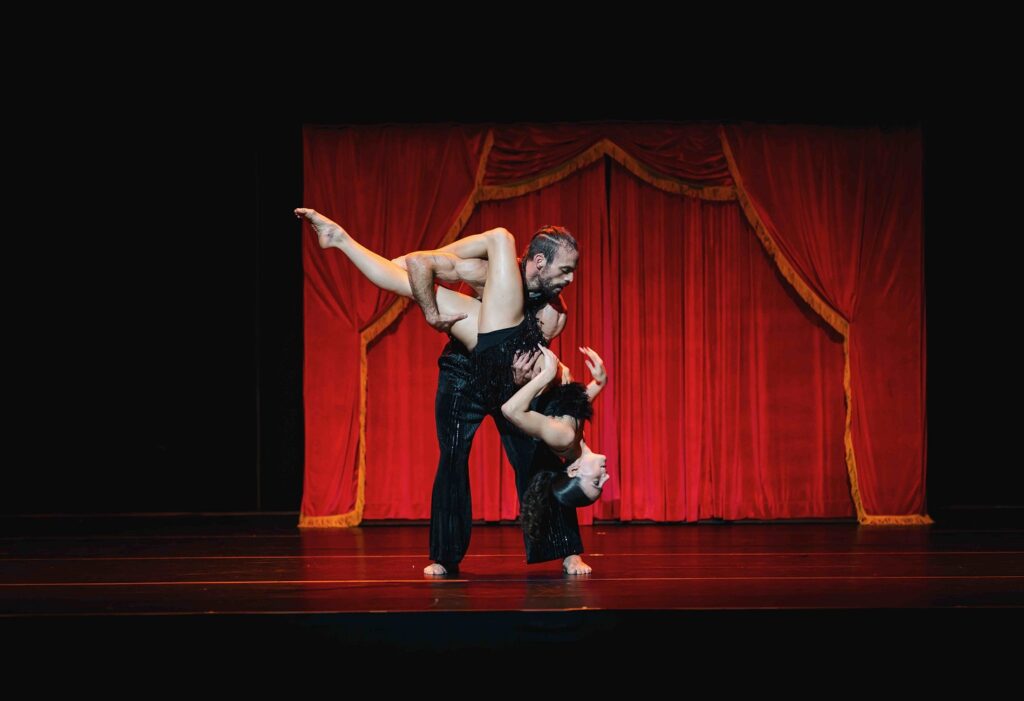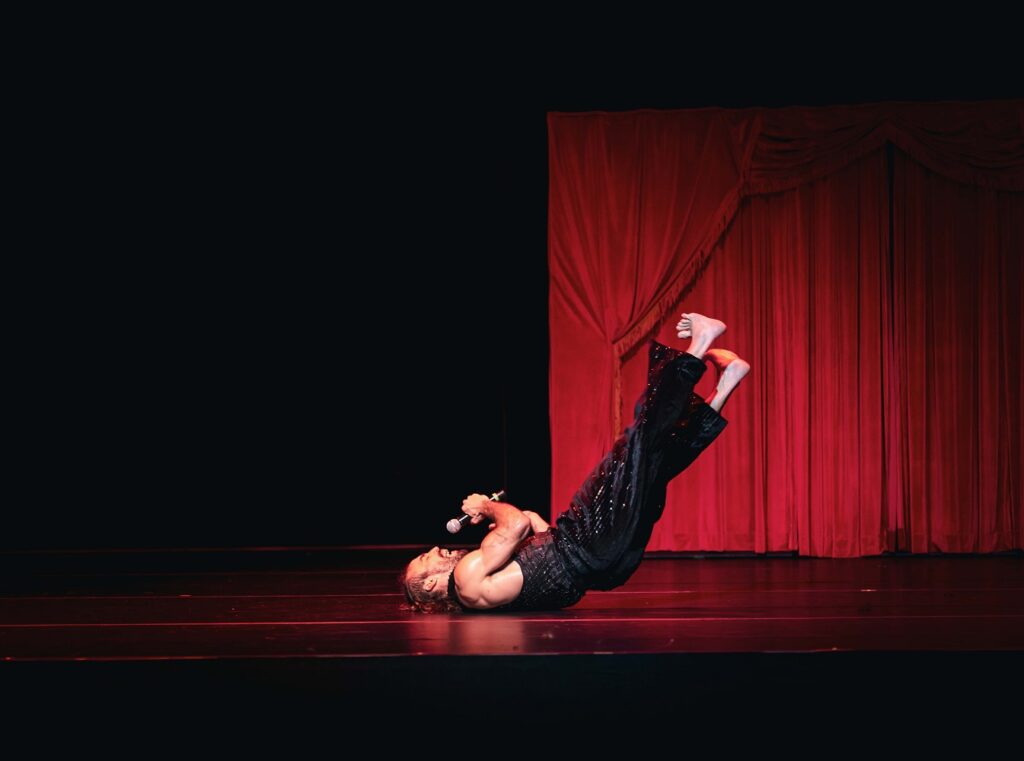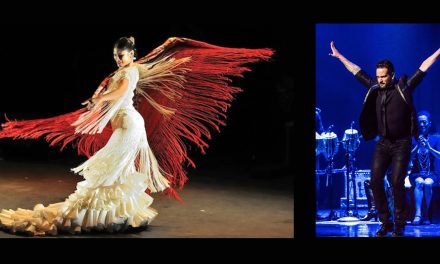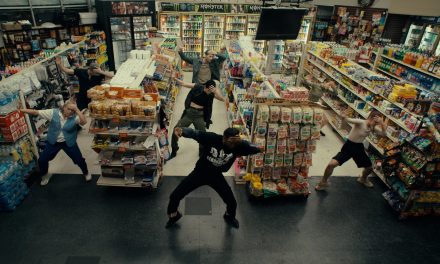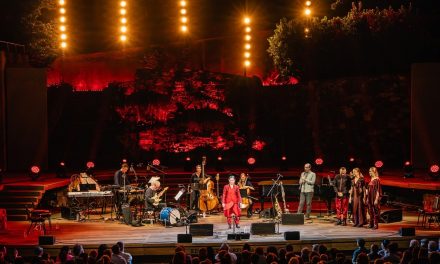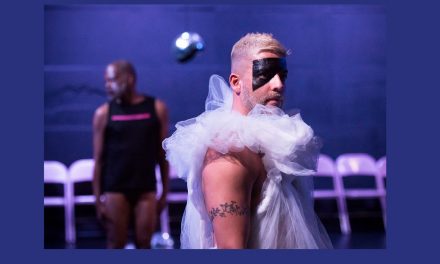This was the culmination of the second year of an expanded Los Angeles season for BODYTRAFFIC at the gorgeous Avalon Hollywood Theater. The 24/25 season consisted of four different shows in four different venues throughout L.A. and the Southland. The shows were all a reflection of the sentiment that “…this reminds me of you,” whether that be a picture, a song, a place or a feeling. From the program notes, “This season invited audiences on a journey through memory— its power to shape who we are and where we’re headed. Through paintings, songs, places, and sensations, we explored how memories awaken deep feelings of nostalgia. These glimpses of the past don’t simply fade away; they shape our future and forge lasting connections between us.” The connections between us being the operative motivation in the shows presented.
A case in point was the free, in-studio showcase which this reviewer attended in order to catch a glimpse of new works in progress and also as a community gathering after the Los Angeles Wildfires. This showcase was at the BODYTRAFFIC studios in Koreatown and featured excerpts of the pieces which were fully realized last Thursday at the Avalon Hollywood. It was interesting and satisfying to see the works then and witness their maturity now. Some ideas and movement were discarded altogether and the remaining made for a streamlined and potent comment for each individual piece.
The Avalon Hollywood is a historic nightclub and theater located near the intersection of Hollywood and Vine. It was an elegant and vibrant atmosphere which perfectly matched the occasion celebrating the fruition of BODYTRAFFIC’s 24/25 season. The theater has a rich and varied history and has previously been known as The WPA Federal Theatre, El Capitan Theatre, The Jerry Lewis Theatre, The Hollywood Palace and The Palace. It was originally known as The Hollywood Playhouse and opened for the first time on January 24, 1927. This venue served the feeling of joyous celebration very well with intimate cabaret tables and banquet seating opposite two long bars.
The program consisted of three pieces, “Mayday” by Trey McIntyre, and two world premieres, “Coalescence” by Jordyn Santiago and “Curtain Call” by Joan Rodriguez. I had only seen three sections of “Mayday” at the company showcase. To see the expanded complete version was a journey into the past. It is a nostalgic reclaiming of Buddy Holly’s genius. His voice and lyrics take hold and transport us to another time. There was definitely a connection in the audience between those who knew his music and life story.
Mcintyre utilizes a small toy plane to stand in for the real thing, however, it is present from the beginning of the piece and appears in every scene. Suddenly I became aware that as long as that plane stayed aloft Buddy Holly’s music and voice would keep playing. It was a small thing based on a child’s toy and yet whoever knew what happened to Buddy Holly and Ritchie Valens and the Big Bopper on that fateful day couldn’t help but be on the edge of their seat awaiting the inevitable. For those who didn’t know and were not familiar with Buddy Holly’s music, the visuals of the dancers cavorting through his lyrics and the sentiments they presented in tandem with his rhythms were more than enough to entertain as well as educate this particular moment of musical history. The plane could be construed as a naïve use of poetic license if it weren’t for the title of the piece. “Mayday” here is not the first of May as sung in “Camelot.” It is “m’aider,” or aidez-moi and means “Help Me.” In aviation it is an internationally recognized distress signal used by pilots to indicate imminent danger or emergency.
The costumes by Karen Young were brilliant in that they managed to be nerdy and sexy at the same time – something Holly was acutely aware of. It took him years before he finally caved in and wore his glasses onstage. He waited until he found the right heavy black framed kind that became his trademark. They were so nerdy they were cool. The movement and gesture of the choreography illuminated the music and specific songs without narrating them. So much of the movement was full of youthful energy, hopeful, exuberant and open to the future, as he was. It brought our remembrance of him and his music full force to this moment, now. It was a well-thought out and sensitive tribute to the artist. Performers: Chandler Davidson, Katie García, Rebecca García, Pedro Garcia, Anaya Gonzalez, Alana Jones, Joan Rodriguez, Jordyn Santiago.
Second on the program was “Coalescence” by Jordyn Santiago. This work had been explained as an exploration of a deeply personal journey from self-doubt and isolation to joy and self-love. Yes, this is all true and obvious from watching the movement however, there is so much more here, under the surface, deeper even than any one individual and their doubt. As above in “Mayday,” so too in “Coalescence” that even if one isn’t aware or sure of the material or intention of the creator, there is a great deal to glean from the work simply by whatever any individual audience member brings to bear while watching it. This can be true of any performance or art depending on the experiences of the audience in alignment with the artist.
My experience will be specific and definitive to me. This was the case with Santiagos’ piece. I happen to come from a family of very strong women. I also have an interest in the strong women portrayed in various mythologies and religions. This piece brought those women to bear. Lighting by Michael Jarett was dramatic and opened the piece with an intense downspot downstage left where we see Santiago begin a solo. Her movement is plaintive and questioning, seemingly calling out to the aether for help or guidance. And I mean to use the word “aether” in all its’ manifestations. All are applicable here as we see a group of five women answer the call. They enter from upstage right and cross on a diagonal to where Santiago has fallen despairingly.
The costumes have a great deal to do with their purpose as they were made with diaphanous long gowns with a corset and halter top made by UNNAMED atelier, headed by influencer Christina Liu and her boyfriend Jerry Hu. These gowns were reminiscent of the gowns worn by the acolytes of Athena, or the Pythian Sibyls of Apollo’s Temple at Delphi. And as such they bring strength, truth, and visions of the future to bear on the person summoning them.
Santiago utilizes two-dimensional movement in phrases throughout the piece. It is these phrases which could have come straight from the walls of the Temple of Isis at Philae, or Karnak, or the Panathenaic Festival procession through Athens up to the Parthenon. The imagery was one of ancient females coming to the aid of one of their own who desperately needs them. These were Amazons, remembered and honored, Valkyries called upon to raise one up. Like the Trojan Women they must deal with a mess, a war, a reality made by men. Am I projecting here? Obviously. I know not everyone in the audience saw what I did. That is the beauty of the audience being able to experience their own personal take on whatever is being offered onstage. I was surprised at how Santiago’s imagery triggered so many historic references that jumped out at me. Her piece is represented on so many tomb walls throughout the ancient world. And I think perhaps that is the point. Female empowerment, sensuality, sexuality, self-realization and ownership have long been assets to every civilization before this one. With this piece Santiago opens her own Pandora’s Box, and I for one look forward to seeing what else flies out of it. Performers: Grecia Cruz, Becky García, Katie García, Anaya Gonzales, Alana Jones and Jordyn Santiago. Music by Rafa Aslan was moody and complimentary to the gravitas of the work.
The closer was “Curtain Call” by Joan Rodriguez. This piece is a tour-de-force for Rodriguez who plays the emcee of a Cuban nightclub/theater and has to deal with pleasing his audience as well as all of the backstage shenanigans which transpires between performers during a show or run. His energy is formidable and seemingly effortless – but I know better. A great deal of rehearsal equals effortless. He has a knack and passion for partnering that is fantastic. Everyone partners everyone else, and the lifts and manipulations are done with surgical precision. I appreciate very much the amount of work and rehearsal that goes into any one of the lifts presented. Blink and you miss them.
Rodriguez also had a live trio off to the side completing the Cuban Club environment. They were musicians: Ricky Matute, Onier Bacallao, and David Gómez and delivered Afro-Cuban rhythms to bring the house down. I felt as if I were at El Floridita on a hot Saturday night. I loved when Rodriguez, as the emcee declared, “…my English is not looking good.” The point being that the emcee’s choreography, his performance needs no language justification. One has only to visually and aurally experience his over-the-top show to comprehend his message. And the message is one of celebration to life and living. Backstage we see the performers tired and dealing with each other’s personalities, but through the front curtain we see a thousand volts course through their bodies. That is why we do it. Again, the audience gets to see into the lives of these performers, as they saw into the life of Santiago’s character, as they saw into the life of Buddy Holly. Performers: Katie García, Pedro Garcia, Anaya Gonzalez, Alana Jones, Jordyn Santiago, and Joan Rodriguez.
BODYTRAFFIC delves into the meaning of what it is to be human. They do it particularly through the lens of themselves. But they do it for the audience and for each other. In that way the journey of Art happens to everyone present at any given show. And that is the point of shared stories around a fire or a show on a proscenium stage. To be seen, to be heard and understand in the sharing that we are all alike.
To learn more about BODYTRAFFIC, please visit their website.
Written by Brian Fretté for LA Dance Chronicle.
Featured image: BODYTRAFFIC in “Coalescence” by Jordyn Santiago – Photo by Guzmán Rosado.
